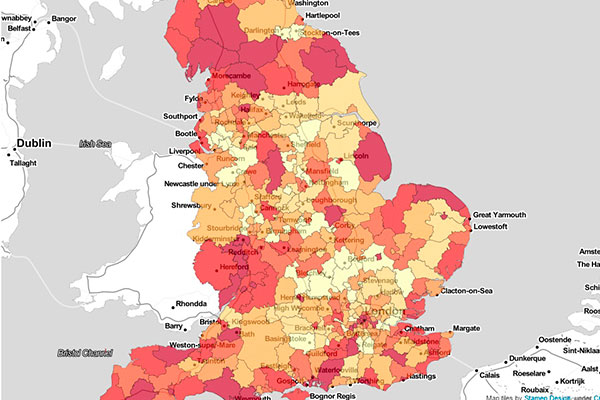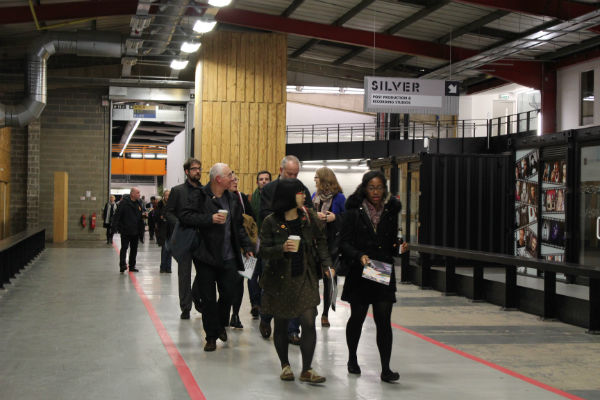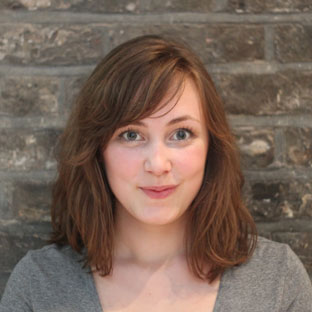What makes a sense of place – and how do you empower everybody in a community to feel proud of, and able to contribute to, where they live and work? And how do you build this sense of place, through strategic interventions – and community ownership?
If you ask somebody who has a stake in heritage, the answer is typically everybody. But when you take that question one step further, and ask who has a responsibility for heritage, the answer is very different – “those with the money and time to do so”, “the active residents”, or indeed – “the Council” or “local museums”. Why is it that we feel we all benefit from the surroundings in which we live, but don’t feel able to contribute to it – and why don’t we feel ownership over making where we live a better place for everybody?
 Over the last year that I’ve been working on the RSA’s Heritage, Identity and Place project, I’ve been fortunate enough to travel around the country and explore many towns and cities. I’ve talked my way into the beautiful Doncaster Mansion House (one of only three remaining mansion houses in the country), which is closed off to the public. I’ve had a walking tour of Maidstone, exploring the beautiful architecture and hidden gems that lie behind (or on top of) chain stores and supermarkets. I’ve run a workshop in Chelmsford, working with the local residents to create a coherent story for the City. And I’ve come across fantastic resources, like Rules for a Playful Museum, establishing museums as places of activity and fun, as well as history.
Over the last year that I’ve been working on the RSA’s Heritage, Identity and Place project, I’ve been fortunate enough to travel around the country and explore many towns and cities. I’ve talked my way into the beautiful Doncaster Mansion House (one of only three remaining mansion houses in the country), which is closed off to the public. I’ve had a walking tour of Maidstone, exploring the beautiful architecture and hidden gems that lie behind (or on top of) chain stores and supermarkets. I’ve run a workshop in Chelmsford, working with the local residents to create a coherent story for the City. And I’ve come across fantastic resources, like Rules for a Playful Museum, establishing museums as places of activity and fun, as well as history.
Recently, somebody asked me how this travelling has affected my wellbeing, particularly as we so frequently talk about the connection between place and wellbeing. I felt fortunate to be able to honestly answer that it has made me so much more appreciative for where I live. It’s made me question, go into corners and buildings I never would have thought of, and to look up and around more frequently. It’s given me permission to geek out about historic buildings, and to understand how people are actively shaping their future heritage.
 It’s also given me the freedom to ask people what they care about. To quote Claire Turner of Manchester Histories, at one of our recent events, “rather than saying to people we’re going to talk about ‘history’ and ‘heritage’, we say tell us about your passion and what you’re interested in – and you naturally will go from one to another”.
It’s also given me the freedom to ask people what they care about. To quote Claire Turner of Manchester Histories, at one of our recent events, “rather than saying to people we’re going to talk about ‘history’ and ‘heritage’, we say tell us about your passion and what you’re interested in – and you naturally will go from one to another”.
Who has a responsibility for place? Everybody. But we also have a responsibility to help people understand and engage with their local area – and sometimes that means coming out of your comfort zone too, to help others get out of theirs. Things like the Happy Museum Project aren’t conventional - they rely on pushing boundaries and being bold enough to try. And shaping a place means working collaboratively – across borders, teams and communities.
So let’s collaborate, and work together to share lessons, understandings and experiences. After all, we’re making heritage as we exist – so let’s make it meaningful, for now and for the future.
This blog is cross-posted to The Glass-House Community Led Design, in advance of The Glass-House Debate, Place: who belongs here?
Related articles
-
Blog: David Bowie lived downstairs – how we build heritage from personal histories
Jamie Cooke
In a personal reflection on the recent death of David Bowie, Head of RSA Scotland Jamie Cooke shamelessly steals his mum’s connection to the star in order to reflect upon the importance of personal heritage.


Join the discussion
Comments
Please login to post a comment or reply
Don't have an account? Click here to register.
Joanna a very interesting and timely piece. I'm assuming that the 'country' referred to is England. In the Scottish dimension I'd want to mention a few specifics that support what you say about community ownership and place.
The first specific is the steady growth of the Scottish Development Trust Association movement. Scotland shares that success ,of course, with England that has its own Association.
The other, perhaps more specifically Scottish, specific is the community controlled housing Association movement. The many housing associations in the community movement were championed, established and managed and developed by local residents. They rescued and redeveloped urban neighbourhoods where the inept and brutal exigencies of the private and then public sector agencies had reduced to a seemingly irretrievable condition of slumdome and deprivation. Perpaps the movement most widely recognised legacy` is the rescue and rehabilitation of the unique tenemental stock in Glasgow and the West of Scotland. Tenements are core to any sense of history and identity in a great many urban Scottish places.
Finally ,there is the slowly developing investment and participation of communities of place in the renewable energy field.I had the good fortune to be commissioned by Architect & Design Scotland to study and report on an array of three communities that had embarked on the renewables route. The case studies were: Edy (small island in the Orkney); Neilston (mall market town in Renfrewshire); and Douglas (a large village in Lanrkshire.The diversity of places reflects the innovatory and inventive approaches the communities are taking to renewing and replenishing their places. Their aim is places as those that people want to, and are able to, live an work in - and therefore identity with as 'my place'.